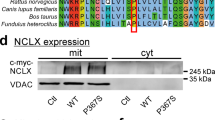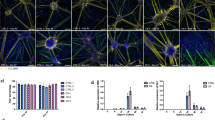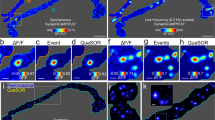Abstract
SPONTANEOUS liberation of neurotransmitter quanta is strongly affected by the osmotic pressure of the extracellular fluid. Elevation of the osmolarity by 20–30% increases the rate of release from motor nerve endings by more than one order of magnitude1,2. In this respect the neuromuscular junction resembles some other secretory systems3–5. The mechanism of this hyperosmotic neurosecretion is not yet understood; extracellular calcium ions are not directly responsible, since this effect can be produced in their absence6. Recently, it has been suggested that the liberation of neurotransmitter is regulated by the intracellular concentration of free calcium ions6–8. We have therefore examined the hypothesis that hyperosmotic neurosecretion originates from an increase in internal calcium concentration ([Ca]in). At the frog neuromuscular synapse however, it is impossible at present to estimate directly free [Ca]in; hence we used an indirect technique, which is based on two assumptions; first, the frequency of the miniature endplate potentials (m.e.p.p.s.) reflects free [Ca]in. Second, the movement of calcium ions across the presynaptic membrane is governed by the electrochemical gradient, and by the calcium conductance (gCa). If hyperosmotic neurosecretion is caused by an increase in [Ca]in, then increasing gCa, under reversed electrochemical gradient for the calcium should cause a reduction in the effect of hyperosmotic stress on transmitter release. We report that hyperosmotic neurosecretion is dependent on [Ca]in.
This is a preview of subscription content, access via your institution
Access options
Subscribe to this journal
Receive 51 print issues and online access
$199.00 per year
only $3.90 per issue
Buy this article
- Purchase on SpringerLink
- Instant access to full article PDF
Prices may be subject to local taxes which are calculated during checkout
Similar content being viewed by others
References
Fatt, P. & Katz, B. J. Physiol., Lond. 117, 109–128 (1952).
Furshpah, E. J. J. Physiol., Lond. 134, 689–699 (1956).
Hayward, J. N. & Vincent, J. D. J. Physiol., Lond. 210, 947–972 (1970).
Moses, A. M., Miller, M. & Streeter, D. M. P. Metabolism 25, 697–721 (1976).
Hays, R. M. New Engl. J. Med. 295, 657–665 (1976).
Blioch, Z., Glagoleva, I. M., Lieberman, E. A. & Nenashev, V. A. J. Physiol., Lond. 199, 11–35 (1968).
Rahamimoff, R. & Alnaes, E. Proc. natn. Acad. Sci. U.S.A. 70, 3613–3616 (1973).
Miledi, R. Proc. R. Soc. B. 183, 421–425 (1973).
Baker, P. F., Hodgkin, A. L. & Ridgway, E. B. J. Physiol., Lond. 218, 709–755 (1971).
Liley, A. W. J. Physiol., Lond. 134, 427–433 (1956).
Baker, P. F., Meves, M. & Ridgway, E. B. J. Physiol., Lond. 231, 527–548 (1973).
Cooke, J. D. & Quastel, D. M. J. J. Physiol., Lond. 228, 435–458 (1973).
Katz, B. & Miledi, R. J. Physiol., Lond. 203, 459–487 (1969).
Alnaes, E. & Rahamimoff, R. J. Physiol., Lond. 238, 285–306 (1975).
Rahamimoff, R. et al. Cold Spring Harb. Symp. quant. Biol. 40, 107–116 (1976).
Scarpa, A. & Azzone, G. F. J. biol. Chem. 243, 5132–5138 (1968).
Author information
Authors and Affiliations
Rights and permissions
About this article
Cite this article
SHIMONI, Y., ALNAES, E. & RAHAMIMOFF, R. Is hyperosmotic neurosecretion from motor nerve endings a calcium-dependent process?. Nature 267, 170–172 (1977). https://doi.org/10.1038/267170a0
Received:
Accepted:
Issue date:
DOI: https://doi.org/10.1038/267170a0
This article is cited by
-
Differential effects of various secretagogues on quantal transmitter release from mouse motor nerve terminals treated with botulinum A and tetanus toxin
Naunyn-Schmiedeberg's Archives of Pharmacology (1987)
-
How elevated extracellular Ca2+ inhibits quantal acetylcholine release at frog neuromuscular junctions in high K+
Pflügers Archiv (1983)
-
Supraoptic neurones of rat hypothalamus are osmosensitive
Nature (1980)
-
Stimulation of the frequency of MEPPs at the frog neuromuscular junction by extracellular EGTA
Naunyn-Schmiedeberg's Archives of Pharmacology (1980)



